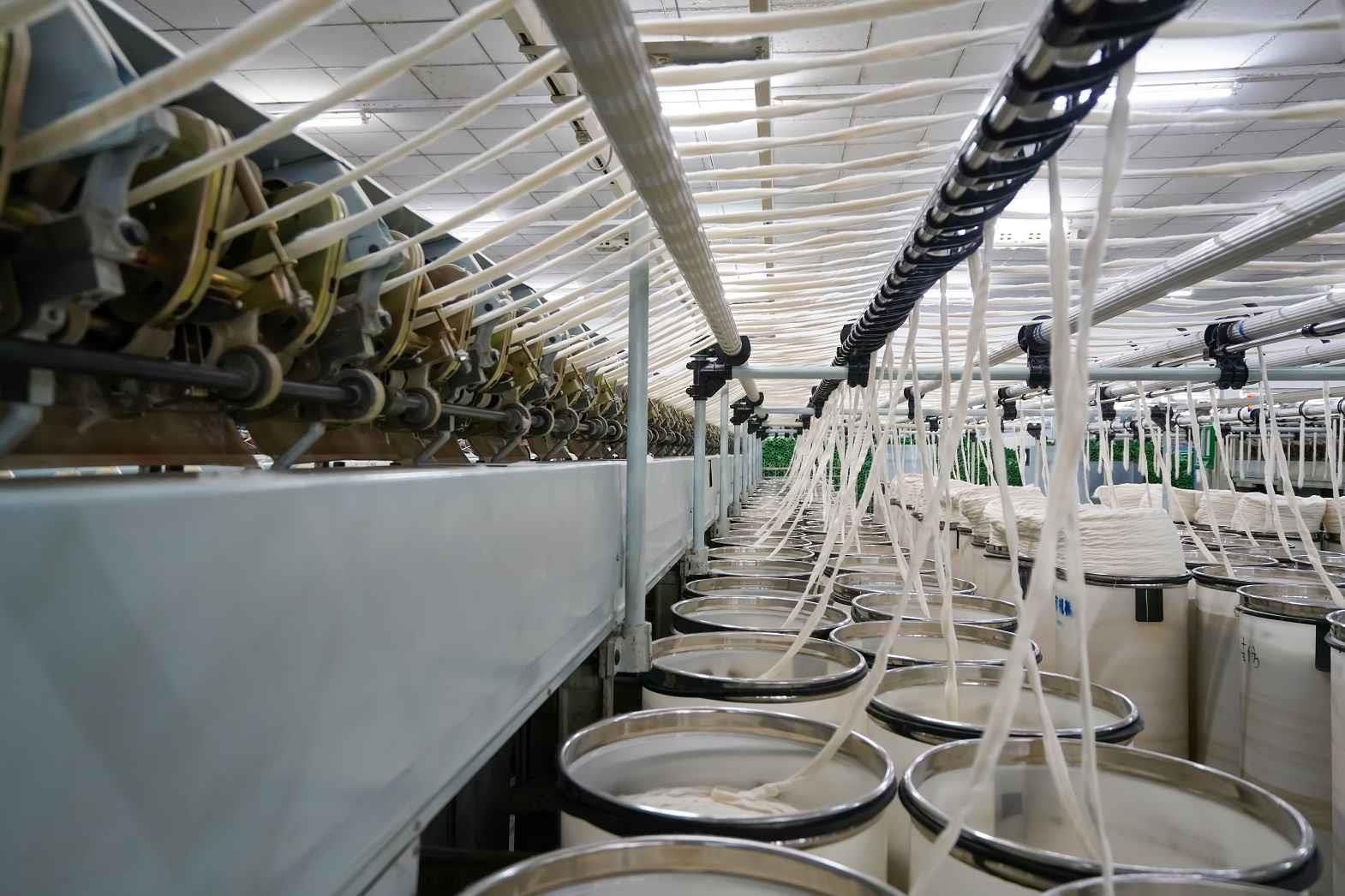The dragon nation is the largest exporter of cotton in the world. Xinjiang contributes to over 30 percent of the entire nation's production becoming the top cotton producing state. The province of Shihezi in Xinjiang is one of the primary producing areas of the crop. Another unique feature of the cotton of the Xinjiang is that it is extremely soft especially when woven into the length of a cloth. The long staple variety of crop from the Xinjiang region has an average length of 4 cm.
The Xinjiang Production and Construction Corps (XICC) is home to 175 regiment farms, which makes it the largest producer of cotton in the region and contributed an output of 42 percent in 2013. The drip water irrigation systems in the province help cultivate a rich crop of cotton to fulfill its global demand. The increasing amount of support through government subsidies provided to the region has given a strong boost to the cotton production.
The government now plans to expand the textile sector of the region by taking a step ahead. China plans to invest more than a billion dollars in the Uyghur region of Xinjiang. The region is set to witness a makeover worth $ 3.2 billion. Facilities like textile and industrial parks, latest technology, and subsidies for textile enterprises are to be provided. This is expected to create 1 million jobs in the textile industry within the next ten years.
The attempts to support Xinjiang are also to develop the poor communities residing in the region by providing them financial and social stability. The central government wishes to lure more textile manufacturers since changes in the cotton policy may also result in a drop in cotton prices of Xinjiang. Beijing also plans to keep the output of cotton stable in Xinjiang to attract garment producers and empower local employment. Special importance is being given by the government to projects relevant to printing, dyeing, finishing, cotton textiles, knitting, and hand-crafted carpets. To improve manufacturing conditions and invite garment makers, provisions such as financing, lower taxes, and operating subsidies will also be provided by the government.
Many Chinese apparel manufacturing companies had started moving their production base to Vietnam and other countries in Asia owing to increasing labor prices within the country. By vertically integrating the Xinjiang region from cotton production to manufacturing finished apparels, the government plans to develop this otherwise poor area. The development in these regions is aimed to lure apparel makers to manufacture labor-intensive garments in Xinjiang and avoid outsourcing.
The subsidies and low taxes is an endeavour by the authorities in Xinjiang to provide employment to citizens in the region and attract the kinds of companies moving abroad especially Vietnam. According to country's state news agency Xinhua, 90 percent of first quarter of 2014 garment sector investment came from Chinese companies. This also gave rise to Vietnamese clothing and related goods export to a whopping $ 4.5 billion.
Garment manufacturers from other provinces are now flocking to Xinjiang due to better infrastructure, subsidized logistics cost, and tax benefits. The capital of Xinjiang, Urumqi, is going to be developed as the regional textile and apparel trading centre. While Aksu, the southern city in the region, is designated to be one of the three textile industrial cities. The efforts of the government to make such a move have helped throng investments from the eastern regions of the country.
Today the province of Xinjiang is home to more than 40 manufacturers, which include names of some big companies like Shandong Ruyi Group, Youngor Group Co. Ltd, and Huafu. Government initiatives and support is providing the much required push to the otherwise poor province of Xinjiang. The investments are believed to provide a million jobs and help the region to not only produce domestically but also boost apparel export to Central Asia, Western Asia, South Asia, and Europe.
In the years to come Xinjiang has the potential and is showing signs of turning into one large domestic apparel production hub and an export base. The province of Xinjiang has a strong backing of its competitive cotton industry which will help extending its slowly growing apparel sector. The output of the textile and apparel industry of Xinjiang was 212.5 billion yuan for 2013. The region is undeniably on its way to become an important landmark for apparel manufacturing along with being a prominent cotton producing destination in China.
References:
1. Oregonlive.com
2. Fashionatingworld.com
3. Reuters.com
4. Saintkeat.wordpress.com
5. Chinadaily.com








Comments